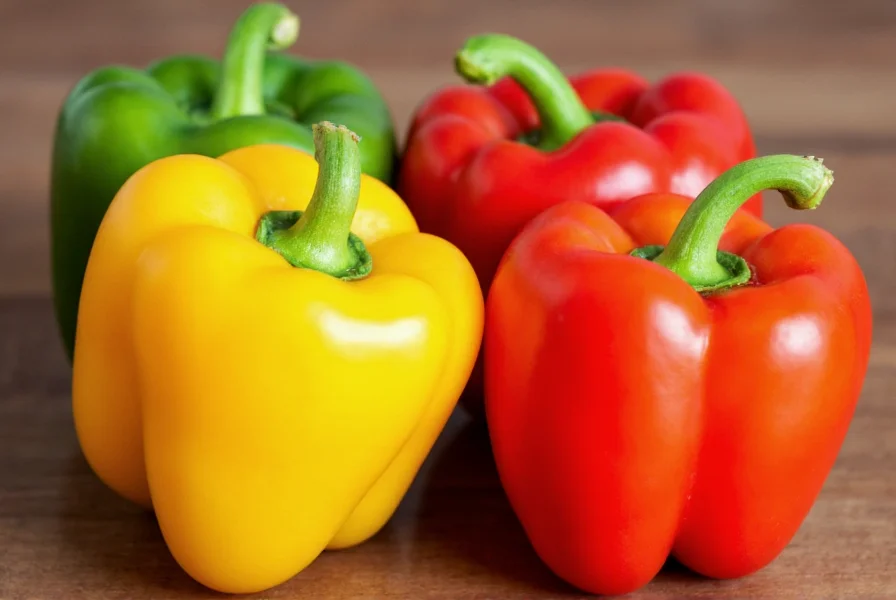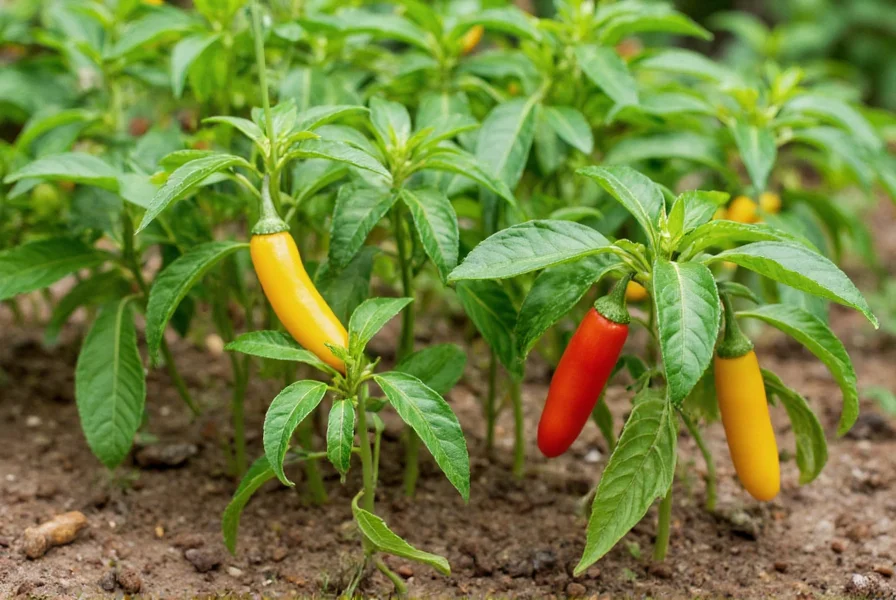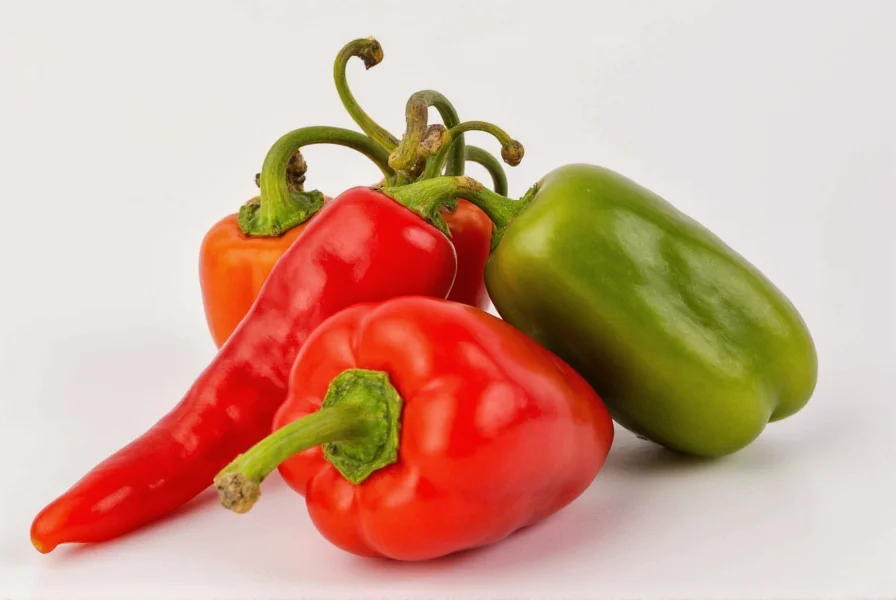When people search for “pepper c,” they're typically seeking information about bell peppers and their exceptional vitamin C content. This confusion likely stems from the high concentration of ascorbic acid (vitamin C) in Capsicum varieties, particularly sweet bell peppers. Understanding the nutritional profile and benefits of these colorful vegetables provides valuable insights for health-conscious consumers and gardeners alike.
Understanding Bell Peppers and Vitamin C
Bell peppers, scientifically classified as Capsicum annuum, belong to the nightshade family (Solanaceae). Unlike their spicy chili pepper relatives, bell peppers lack capsaicin, the compound responsible for heat in other peppers. What they do contain in abundance is vitamin C, with levels varying significantly by color:
| Pepper Color | Vitamin C (mg per 100g) | Percent Daily Value | Compared to Oranges |
|---|---|---|---|
| Yellow Bell Pepper | 341 | 379% | 3.3x higher |
| Red Bell Pepper | 183 | 203% | 1.8x higher |
| Green Bell Pepper | 80 | 89% | 0.8x (slightly less) |
| Orange Bell Pepper | 185 | 206% | 1.8x higher |
| Orange (per 100g) | 53 | 59% | Baseline |
The ripening process significantly impacts vitamin C levels. Green bell peppers, harvested early, contain less vitamin C than their fully ripened counterparts. As peppers mature from green to yellow, orange, or red, their vitamin C content increases substantially. This maturation process also develops other beneficial compounds like beta-carotene and lycopene.
Nutritional Science Behind Pepper Vitamin C
Vitamin C in bell peppers exists primarily as ascorbic acid, a water-soluble vitamin crucial for multiple bodily functions. Unlike most animals, humans cannot synthesize vitamin C, making dietary sources essential. Bell peppers provide this nutrient in a highly bioavailable form, enhanced by their natural matrix of complementary phytochemicals.
The exceptional vitamin C content in yellow bell peppers (341mg/100g) represents one of the highest concentrations among commonly consumed vegetables. This surpasses not only oranges (53mg/100g) but also other vitamin C-rich foods like strawberries (59mg/100g) and broccoli (89mg/100g). The vitamin C in peppers remains stable when consumed raw, though cooking methods affect retention rates.

Health Benefits of Pepper-Derived Vitamin C
Regular consumption of vitamin C-rich bell peppers delivers multiple health advantages backed by nutritional science:
- Immune System Support: Vitamin C stimulates white blood cell production and function, enhancing the body's defense against pathogens
- Skin Health Preservation: As a cofactor in collagen synthesis, vitamin C from peppers helps maintain skin elasticity and wound healing
- Antioxidant Protection: Bell peppers' vitamin C neutralizes free radicals, reducing oxidative stress and inflammation
- Iron Absorption Enhancement: The vitamin C in peppers increases non-heme iron absorption from plant-based foods by up to 67%
- Cardiovascular Support: Regular intake correlates with improved endothelial function and reduced blood pressure
Research published in the American Journal of Clinical Nutrition indicates that consistent consumption of vitamin C-rich foods like bell peppers may reduce the duration of common cold symptoms by 8% in adults and 14% in children. The synergistic effect of vitamin C with other compounds in peppers creates a nutritional profile superior to isolated vitamin supplements.
Growing Vitamin C-Rich Peppers
For gardeners interested in maximizing vitamin C production, several factors influence the nutritional content of harvested peppers:
- Sun Exposure: Peppers receiving 6-8 hours of direct sunlight develop higher vitamin C concentrations
- Harvest Timing: Allowing peppers to fully ripen on the plant increases vitamin C content significantly
- Soil Nutrition: Balanced nitrogen levels support optimal vitamin development without compromising flavor
- Water Management: Consistent moisture prevents stress that can reduce nutrient density
While no specific cultivar is officially named “Pepper C,” varieties like 'Golden California Wonder' (yellow) and 'Merlin' (red) consistently rank among the highest in vitamin C content. These open-pollinated varieties perform well in diverse climates and deliver exceptional nutritional value when harvested at peak ripeness.

Preserving Vitamin C in Culinary Applications
Cooking methods dramatically affect the vitamin C retention in bell peppers. Understanding these dynamics helps maximize nutritional benefits:
- Raw Consumption: Eating peppers raw preserves 100% of vitamin C content
- Steaming: Retains approximately 85-90% of vitamin C when limited to 3-5 minutes
- Stir-Frying: Maintains 75-80% of vitamin C with quick cooking times (2-3 minutes)
- Boiling: Causes significant loss (40-60%) as vitamin C leaches into water
- Roasting: Preserves 60-70% of vitamin C while enhancing flavor compounds
Pairing bell peppers with healthy fats like olive oil improves the absorption of fat-soluble nutrients while the vitamin C remains unaffected. Culinary combinations with iron-rich plant foods like spinach create nutritionally synergistic meals that maximize health benefits.
Common Misconceptions About Pepper Vitamin C
Several myths persist about vitamin C in peppers that deserve clarification:
- Myth: All peppers contain similar vitamin C levels
Fact: Yellow peppers contain over four times more vitamin C than green varieties - Myth: Cooking destroys all vitamin C in peppers
Fact: Proper cooking methods retain significant amounts, and some compounds become more bioavailable - Myth: Supplements provide equivalent benefits to whole-food vitamin C
Fact: The vitamin C matrix in peppers includes complementary phytochemicals that enhance absorption and function - Myth: Hot peppers contain more vitamin C than sweet peppers
Fact: Bell peppers generally contain higher vitamin C concentrations than most chili varieties
Understanding these distinctions helps consumers make informed choices about incorporating vitamin C-rich peppers into their diets for optimal health benefits.
Conclusion
The term “pepper c” reflects a common misunderstanding about the exceptional vitamin C content in bell peppers. These colorful vegetables represent one of nature's most potent sources of ascorbic acid, with yellow varieties leading in concentration. Incorporating a variety of ripe bell peppers into your diet provides substantial health benefits through their impressive vitamin C profile and complementary nutrient matrix. Whether enjoyed raw in salads, lightly cooked in stir-fries, or roasted for enhanced flavor, bell peppers deliver exceptional nutritional value that surpasses many traditional vitamin C sources.
Which color bell pepper has the highest vitamin C content?
Yellow bell peppers contain the highest vitamin C content among common varieties, providing approximately 341mg per 100g. This represents nearly seven times more vitamin C than green bell peppers and more than six times the amount found in oranges by weight. The extended ripening process that turns peppers from green to yellow significantly increases their vitamin C concentration along with other beneficial phytochemicals.
How does cooking affect vitamin C levels in bell peppers?
Cooking methods impact vitamin C retention differently. Raw consumption preserves 100% of vitamin C. Steaming for 3-5 minutes retains 85-90%, while stir-frying maintains 75-80% when cooked quickly. Boiling causes the most significant loss (40-60%) as vitamin C leaches into the water. Roasting preserves 60-70% of vitamin C while enhancing flavor compounds. To maximize vitamin C intake, consume peppers raw or use minimal-heat cooking methods with short durations.
Can bell peppers provide enough vitamin C to prevent deficiency?
Yes, a single medium yellow bell pepper (about 116g) contains approximately 396mg of vitamin C, which exceeds the recommended daily allowance (90mg for men, 75mg for women) by more than four times. Regular consumption of bell peppers, especially yellow and red varieties, can easily meet and exceed daily vitamin C requirements. Just 30g (about 1/5 of a pepper) provides 100% of the daily requirement, making bell peppers one of the most efficient dietary sources of vitamin C.
Why do yellow bell peppers have more vitamin C than green ones?
Yellow bell peppers contain more vitamin C than green ones because they've undergone a longer ripening process on the plant. Green peppers are harvested before full maturity, while yellow peppers continue developing, which triggers biochemical changes that increase vitamin C production. As peppers ripen from green to yellow, their vitamin C content can increase by 300-400%. This extended maturation also develops other beneficial compounds like carotenoids and flavonoids that work synergistically with vitamin C.











 浙公网安备
33010002000092号
浙公网安备
33010002000092号 浙B2-20120091-4
浙B2-20120091-4